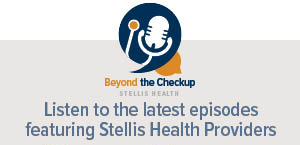Unless you’ve been previously diagnosed with a heart issue, when was the last time you worried about your heart’s next beat? Age, date, location, weather, activity – chances are your heart has pumped away tirelessly without you giving it a second thought. There is no time like the present to pay some attention to your ticker, especially amidst the COVID crisis, which has shown it can directly affect the hearts of those infected.
“Heart disease is the leading cause of death in both men and women in the United States,” says Kari Fabian, MD, internist and Chief Medical Officer at Stellis Health. “While there are factors like family history outside of your control, the good news is there are ways to reduce your risk for heart disease.”
Women’s heart health starts with awareness and education – understanding that women’s hearts, symptoms, and risk factors are uniquely theirs. Presented with all the necessary facts and information, women can protect their hearts.
Scary Stats
Don’t stop reading – these numbers are important! Hopefully they will get your attention and impress upon you the seriousness of heart disease in women.
- Cardiovascular disease kills about 10x more women a year than breast cancer
- The number of women who die of heart disease has risen each year over the last decade, particularly among young women of color
- Only about half of women recognize heart disease to be their #1 killer; it is the leading cause of death for African American or white women in the United States
Heart Disease and Its Causes
There are over 60 different forms of heart disease – some of the most common being: Coronary Heart Disease, Angina Pectoris, Cardiomyopathy, Congenital Heart Disease, Arrhythmia, Congestive Heart Failure, and Atrial Fibrillation. While each diagnosis will have its own origins and risk factors, the overall cause is the malfunctioning of the blood vessels, heart muscle, or electric impulses signaling the heart. The source of the disease can be non-modifiable or modifiable.
| Non-Modifiable (Unchangeable) | Modifiable (Controllable) |
| Family history | Stress |
| Age | High blood sugar |
| Gender | Hypertension |
| Ethnicity | Smoking |
| Menopause | High cholesterol |
| High triglyceride level | |
| Obesity | |
| Diabetes | |
| Unhealthy diet/drinking too much alcohol | |
| Physical inactivity |
Watch For Symptoms
These are the primary indicators for heart attacks and heart disease in women, although it is important to note that women are more likely to not show symptoms, or only minor symptoms before a heart event. Heart disease is sometimes called a “silent killer” as conditions aren’t previously recognized or noted quickly enough in women.
- Pain in the neck, jaw, throat, shoulder, abdomen, upper back, or arms
- Chest pain can indicate heart disease, although it is not commonly a heart attack symptom in women
- Swelling of feet, ankles, legs, abdomen, and neck veins
- Shortness of breath, light-headedness, or dizziness
- Fluttering or palpitations in the chest
- Sweating profusely without exertion
- Unexplained or unusual fatigue
- Nausea, vomiting, and indigestion
Prevention
Fortunately, there are many steps you can take to significantly decrease your chances of developing heart disease, keeping in mind that you should talk to your doctor immediately if you experience any symptoms that shouldn’t be there.
- Choose a healthy diet that is low fat/high fiber, with fruit and veggies; switch to heart-healthy cooking oils and limit salt and sugar intake
- Regularly exercise 30 minutes daily, if possible, or fit more activity into your everyday routine like taking the stairs
- Stop smoking and limit alcohol
- Destress through yoga, an enjoyable hobby, Reiki, or meditation
- Try for 7-8 hours of sleep each night
- Know your numbers and family history – check or have tested cholesterol, blood pressure, triglycerides, diabetes, hypertension, and CT coronary calcium
- Schedule a yearly check-up that includes cardiac health
Gender Differences in Heart Disease
Unfortunately, in the past, women’s symptoms were often dismissed as stress, anxiety, panic disorder, hormonal imbalances, or even hypochondria. The topics of biology, medication dosage, symptoms, and disease commonality are different between men and women. Here are some of the differences:
- Menopause and its tie to cholesterol often affects the timing of obvious symptoms in women
- Women are more likely to have symptoms while resting or sleeping than men
- Diabetes plays a larger role in heart disease in women by increasing risk factors like obesity, hypertension, and high cholesterol
- Women who have had heart attacks and are diabetic have double the risk of a second heart attack or heart failure
- Women usually develop heart disease about 10 years later than men
- Surgery is more difficult in women as their coronary arteries are smaller and lighter
- Women and men have differing results to standard stress exercise tests making interpretation more difficult
Stellis Health is here for your health. Contact us today if you have any health questions, concerns, or to schedule an appointment with your provider.
More resources:
General information Related to Heart Disease
State and Local Public Health Actions Program
National Heart, Lung, and Blood Institute (NHLBI)
For more information on women and heart disease, visit the following websites:
U.S. Department of Health and Human Services (HHS), Office on Women’s Health (OWH)






